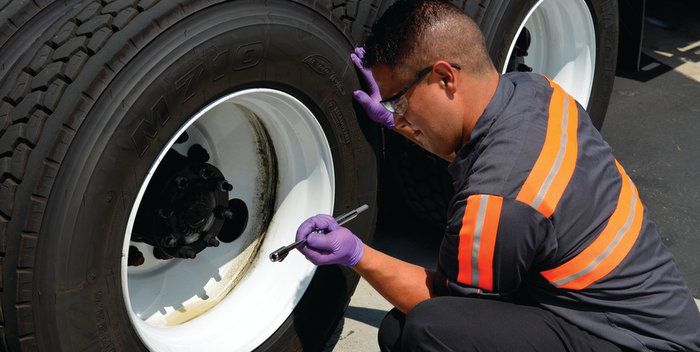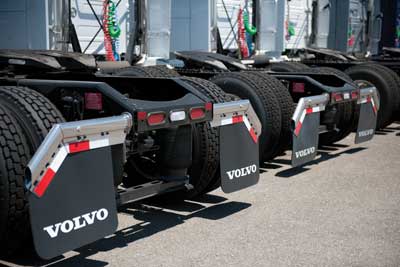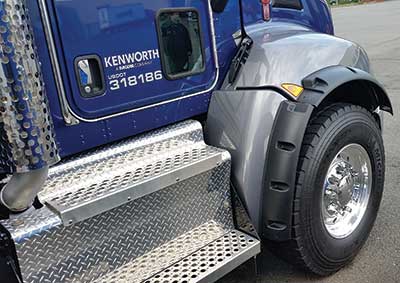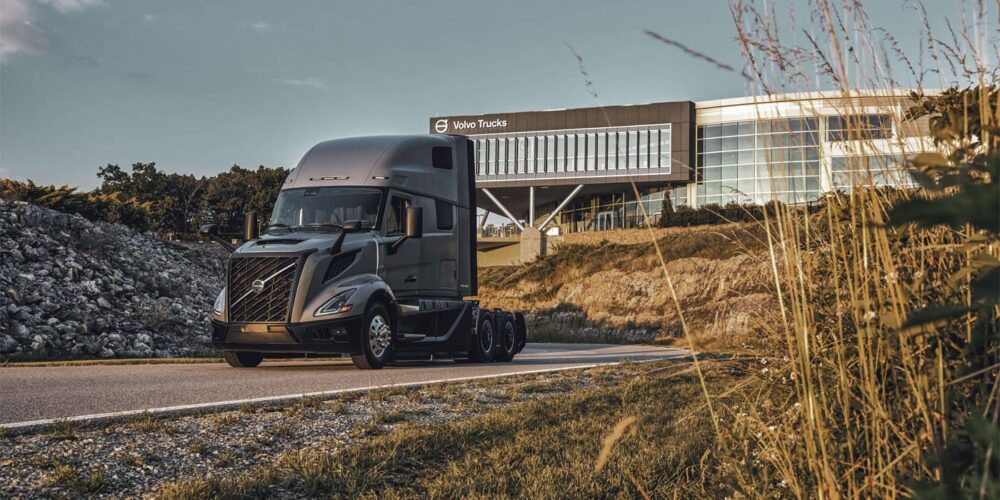Maintaining proper tire pressures in all positions is a challenge. While automatic tire inflation systems (ATIS) are available for trailer tires, maintaining a constant, and correct, pressure in tractor tires is trickier. Both Meritor and Dana have previewed tractor tire inflation systems, but they are not currently available. Much of maintaining proper tire pressure in steer and drive tire positions comes down to knowing what to look for beyond the tire pressure and actually looking for it.
“Inflation pressure, inflation pressure, inflation pressure,” Robert Palmer, director of market sales engineering at Bridgestone, repeated to stress its importance. “If you had to list the most important maintenance item, it’s inflation pressure. Inflation is what carries the load. Next, inspect the tires for unusual conditions. Without proper inflation pressure, you will increase the chance for irregular wear, shorten tire life and damage the casing due to increased deflection.”
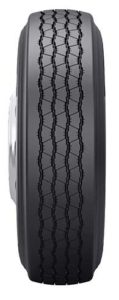 “Today’s steer axles, due to emissions hardware and other factors, may be running at 13,000 lbs. or higher of air pressure,” began Bill Walmsley, product category manager for Michelin Americas Truck Tires. “A tire that is runs at higher than prescribed load is considered overloaded. Based on Michelin’s inflation tables, on a steer axle rated for 12,000 lbs., each tire has to be capable of carrying a 6,000-lb. load. So if a 11R22.5 load range G tire is inflated to 100 PSI, it is carrying 11,900 lbs., then it is considered to be overloaded.
“Today’s steer axles, due to emissions hardware and other factors, may be running at 13,000 lbs. or higher of air pressure,” began Bill Walmsley, product category manager for Michelin Americas Truck Tires. “A tire that is runs at higher than prescribed load is considered overloaded. Based on Michelin’s inflation tables, on a steer axle rated for 12,000 lbs., each tire has to be capable of carrying a 6,000-lb. load. So if a 11R22.5 load range G tire is inflated to 100 PSI, it is carrying 11,900 lbs., then it is considered to be overloaded.
“The same principle applies to drive tires, but the margins for error are a little wider,” Walmsley continued. “Typically, a drive tire inflated to 100 PSI is good for around 5,300 lbs. in a dual setup. Users should check the load and inflation tables for recommended inflation pressures for particular tires, and not to assume a general PSI should be used in all cases. The Data Book contains inflation charts for all Michelin truck tires. These charts are broken down by wheel diameter and the specific PSI for wide singles and duals. The maximum load and pressure are also listed on sidewalls.”
Air can be added to truck tires mounted on a vehicle if the tire is within 20% of the recommended inflation pressure for that vehicle. The industry recommendation states if a tire is 20% below the recommended inflation target, it is considered run flat and should not be re-inflated. Michelin recommends the use of the load and pressure tables in the Data Book to ensure correct tire inflation pressures for vehicles.
It’s important to note that all tire positions are susceptible to pressure loss. Even if you employ an ATIS on your trailer tire positions, you still need to double-check their pressure to ensure proper tire operation. And remember that pressure losses can be cause by external tire issues.
“A key element affecting air pressure loss is the environment the tire is operating in,” said Raul Garcia, commercial product planning for Falken Tire. “For example, lower temperature regions would cause the air molecules to create less activity and in turn decreases the overall pressure. The opposite is true where higher temperatures increase air pressure. The higher the air pressure, the more prone to permeation. This could occur in every position.”
Tractor tire inflation technology
There are a few options available to help maintain tire pressure on tractor tire positions. The most notable is Michelin’s Auto Inflate system, an aftermarket solution made in partnership with Aperia Technologies Inc. It sports a compact, self-powered pump that can be mounted to the hub in 10 minutes using standard tools, no axle drilling required. With each wheel rotation, the device monitors and adjusts for low air pressure. The system can be retrofitted to existing vehicles or as an add-on to new equipment. Additionally, the device works with both duals and wide-base single tires.
Tire pressure monitoring systems (TPMS) are ubiquitous within most of today’s telematics and remote diagnostics systems. While tire pressure alerts still show up on the truck’s dashboard, it’s also appearing on fleet managers’ analytics dashboard.
Bridgestone, for example, offers the Fleet Analyzer 2.0, a mobile and web-based inspection tool to assist with fleet management. This software includes in-service and yard check modules to assess general tire health, forecast tire replacement and correct immediate problems before they become costly downtime. In addition, an out-of-service tire component enables the collection and analysis of scrap tire data, building a library of information to assist with decision making.
Dana recently unveiled its Rhombus TireAnalytics solution, a cloud-based platform that enables commercial truck owners and fleet maintenance managers to identify best practices for tire maintenance and optimize tire lifecycle management. The Rhombus TireAnalytics solution aims to provide insights into the condition of tractor and trailer tires that help identify and analyze tire wear trends and predict maintenance issues that can be addressed preemptively to minimize truck downtime and establish optimal timeframes for scheduled replacement. For larger fleets, it also facilitates the implementation of standardized tire inspection and maintenance practices across terminals.
RELATED: Read about more tire and wheel hot topics here.
As TP Commercial Solutions readies the launch of its Pirelli brand of radial truck tires, Clif Armstrong, president of TP Commercial Solutions LLC, explained that Pirelli has developed a chip called
CyberFleet, that is installed on the inner liner of the tire that can give air pressure and temperature feedback.
“This is critical for both pre-trip inspections as well as notifying the driver or dispatch that there is an impending tire problem on the truck,” Armstrong said. “This can give the driver the ability to address the problem before it becomes more severe.”
While a technology solution can help you monitor tire pressure, there’s no substitute for the daily walk-around inspection and properly testing the tires.
“For a manual system of checks, the key to making it successful is to make it as easy as possible for the driver,” said Gary Schroeder, director of Cooper’s truck and bus tire business, which includes the Roadmaster brand. “Have clear, readily visible standards for target inflations, provide accurate, calibrated pressure gauges that are easy to read, ensure that valve stems of inside dual tires are accessible, use flow-through valve caps, establish convenient standard times for checks, and have a standard form for recording check results. In addition, some fleet management software may offer platforms for recording and tracking data.”
Wearing you down
Aside from daily checks and tire pressure monitoring systems, checking for unusual wear in the steer and drive tire positions can be an indicator that something is wrong.
“As with all free rolling axle tires, steer tire irregular wear due to gravitational forces are the biggest problem. Long haul applications have a tendency to develop river wear, punch wear and intermediate rib depressions, as well as other tread face wear problems. For construction and regional steer tires, shoulder and sidewall damages are more prevalent,” explained Aaron Murphy, vice president commercial tire sales for TBC Corp. “With drive tires, you can see different wear patterns based on the application. Common open shoulder drive tire wear in construction and regional patterns include heel/toe wear and chip/chunking of the lugs, while closed shoulder drives can be susceptible to lowered block wear, spotty wear, and even a diagonal wipe in extreme cases.”
In terms of irregular wear causes, you can often point to tire misapplication, poor tire-wheel mounting and mechanical issues, including axle misalignments, worn suspension parts, bearings improperly adjusted, noted John Grimm, Falken Tire’s TBR sales engineer. “Some irregular wear resulting in these issues may result in shoulder wear, rib punch/rib depression wear, diagonal wear, etc.,” he said.
To improve steer tire wear, to Rick Phillips, vice president of sales for Triangle Tire USA, recommended the following in addition to keeping on eye on inflation:
- Balance. “All steer tires should be balanced when installed and checked periodically as necessary, especially if a vibration is noticed,” Phillips said.
- Alignment: “Making sure the tires are standing upright and pointing straight ahead will extend tire life significantly,” he said.
Matthew Hanchana, sales technical service manager for Giti Tire (USA) Ltd., which markets and sells GT Radial truck tires in North America, reiterated the importance of alignment, in addition to rotation.
“Following a rotation and alignment schedule can save money over time,” Hanchana said. “Irregular wear caused by mechanical problems is the other reason to rotate. Correcting the mechanical problem before the tires are rotated is key. Improper tire alignment can cost you 5,000 to 10,000 miles of a tire’s life.”
Pull it off
While every fleet is going to have its own self-defined tire pull points, here are a couple things to consider.
“Department of Transportation regulations say that the tread depth for any tire on the front wheels of a bus, truck or truck tractor must be at least 4/32nds of an inch when measured at any point on a major tread groove,” Cooper Tire’s Schroeder said. “All other tires on the vehicle must have a tread depth of at least 2/32nds of an inch when measured at any point on a major tread groove. If any measurements are at or below these depth requirements in any part of the tread, the tire should be removed from service immediately.”
In terms of repairs, retread and tire repair suppliers have advocated that the only proper way to repair an injury in the tread area of a tire is to dismount the tire from the wheel, remove the penetrating object, clean and inspect the area of penetration then fill the injury with a rubber plug or stem and patch the inner liner of the tire, Michelin’s Bill Walmsley explained.
“Failure to take both steps can lead to issues with the tire down the road,” Walmsley said. “An inner liner which is not patched can result in a loss of inflation pressure, and an injury not filled may lead to moisture contamination of the casing risking loss of tire endurance later. The commercial tire industry has adopted this practice as the norm with our industry support organizations providing guidance and education.”
“Proper tire repairs should be performed by trained tire service professionals using manufacturer approved procedures,” Schroeder said. “Nail hole repairs are limited to the crown area of the tire. Punctures in the tire tread’s crown area should be repaired as that area of the tire is highly reinforced and does not flex like other parts of the tire. The industry standard maximum size allowed is 3/8 in. in diameter for a nail hole repair in the crown or shoulder.”
Additionally, Schroeder explained that injuries in the shoulder are covered with the reinforced shoulder repair (RSR), and the patch size must be much larger to keep the ends of the patch out of the high flex areas. And any sidewall puncture will require a section repair. A proper tire puncture repair must include both a plug to fill the injury and a patch to repair the liner.
“The location and size limits for repairs need to be respected in order for the long-term integrity of the repair to match the life of the tire casing,” he concluded.

